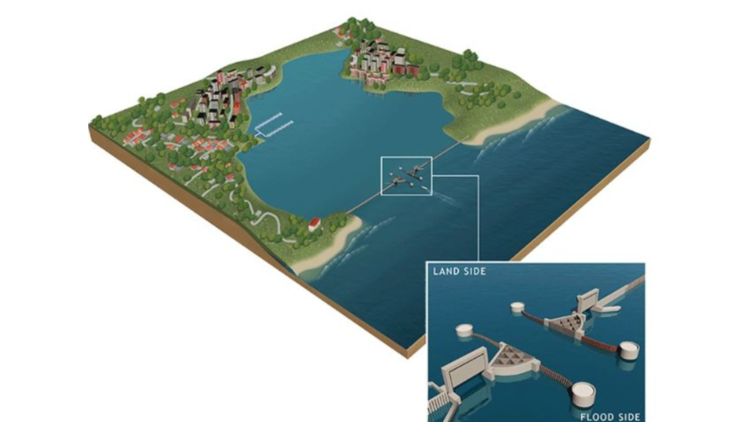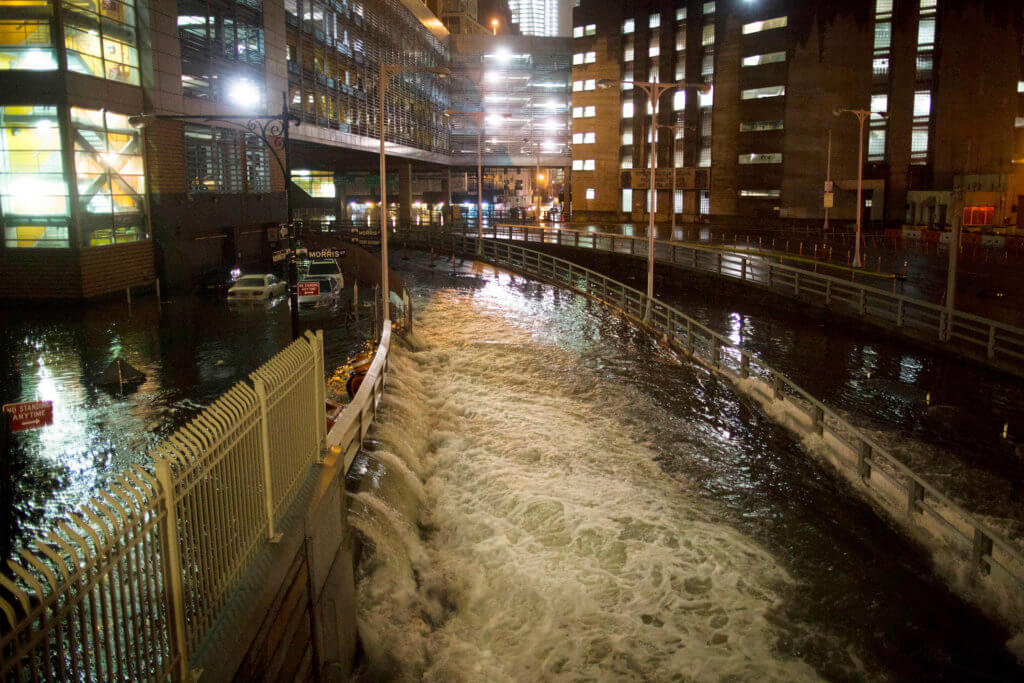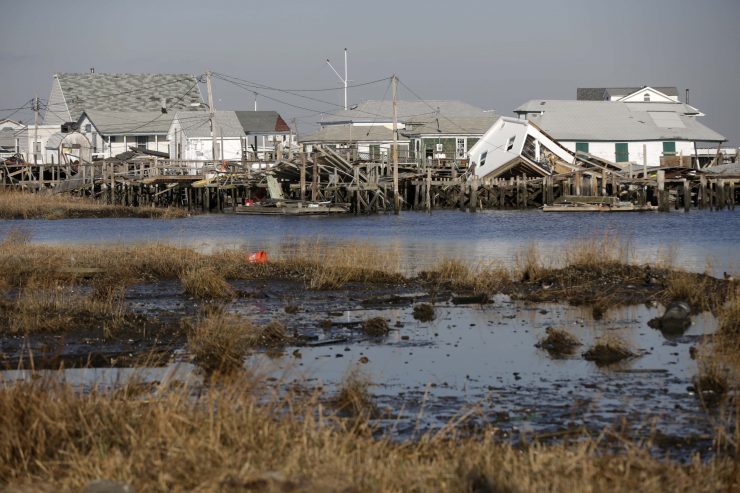BY TIMOTHY BOLGER
As the region marks the seventh anniversary of Superstorm Sandy, debate is surging over proposals to build massive concrete and steel sea gates at the mouths of major Long Island waterways to mitigate future hurricane flooding.
Coastal community residents, lawmakers and environmentalists are at odds over U.S. Army Corps of Engineers (ACE) studies exploring the construction of multibillion flood gates in the Rockaway, Fire Island and Jones inlets to block Atlantic Ocean storm surge from inundating the South Shore.
Also proving controversial is an idea to build a nearly mile-long barrier at the Throgs Neck Bridge to keep the Long Island Sound from swelling the East River and flooding New York City during major storms.
Most ambitious of all is the suggestion to erect a 46-foot-high steel barrier between Sandy Hook, New Jersey, and Breezy Point, Queens, to protect New York Harbor when hurricanes strike — but those residing outside of the gates fear it will worsen their flood damage.

Sparking the federal studies was the 2012 superstorm that killed 53 New Yorkers, displaced tens of thousands of residents, and caused $65 billion in damage. Afterward, $50 billion in federal aid was allocated to fund reconstruction and storm surge mitigation projects, such as raising structures and rebuilding dunes along the oceanfront on LI’s barrier beaches.
Since then, ACE has been studying how to prepare for the next big storm to hit the New York Metro area, which is particularly vulnerable since of forms a right angle, making storm surge pile up. The Throgs Neck and New York Harbor draft proposals stirring up debate are among the alternatives being explored in what’s known as the NY & NJ Harbor & Tributaries Focus Area Feasibility Study (HATS).
HATS, which is further along in its review than the back bays study, acknowledges critics’ fears that such hard structures can worsen flooding for those on the wrong side of the gate.
“The closure of the barriers appears to enhance ocean storm surge for most of the simulated events outside of the closed barrier,” the authors of HATS wrote near the end of the 136-page interim report. “Potential for induced flooding outside of the closed barriers needs to be further analyzed in subsequent modeling efforts to better understand any induced impacts, as well as the potential to avoid and mitigate for those impacts.”
How the inlet and causeway flood gates would impact the South Shore of LI requires further investigation than the 74-page bay bays study has gotten into. Both studies aim to narrow down ACE’s preferred option by next year, when they will be subject to further public review.
But, whatever ideas ACE settles on are likely to face years, if not decades of debate, if and when funding ever gets appropriated, assuming the ideas survive the review process.

By comparison, the Fire Island Inlet to Montauk Point Project, another ACE project to mitigate storm damage for an 83-mile stretch of LI’s southeastern shorefront, languished for a half century and didn’t get its $1 billion in federal funding until after Sandy hit.
If the sea gates get built, critics are concerned that the structures will exacerbate pollution by inhibiting the free flow of the currents, causing contaminants to accumulate. There is also concern that the gates will be used more than once every two years, which ACE has acknowledged.
“We assume that the surge gates would initially be operated for a two-year storm event, which would say once on average event two years, but as sea level rise occurs, that would increase,” said Bryce Wisemiller, an ACE project manager on the HATS study that is trying to “determine when and how they would be operated and for how long.”
Meanwhile, residents in some low-lying communities who are proponents of the plans grow impatient by the glacial pace of the review process. Others believe that it may be time for some coastal residents to literally move on.
Steven Resler, a retired New York State Department of State coastal manager, who favors sea walls for lower Manhattan, regularly reminds people that strategic coastal retreat — not rebuilding waterfront structures destroyed by flooding — has been required by state law for four decades.
“We’re supposed to be moving out of these fragile and important areas and harm’s way, not spending billions to try and maintain existing and place new development in them,” Resler said. “This is not ‘resilience’ … nor is it ‘coastal management.’ It’s sheer and willful madness on the parts of engineering and other consulting contractors, the public and government at every level.”
This story first appeared in the Long Island Press.




































